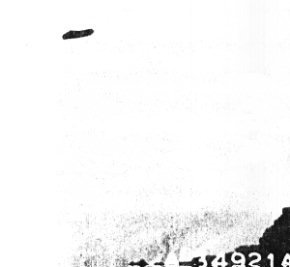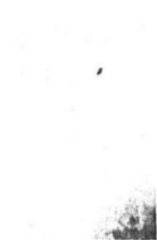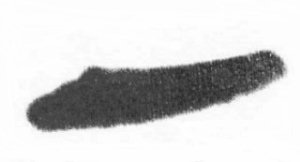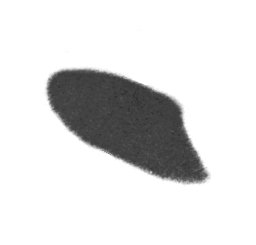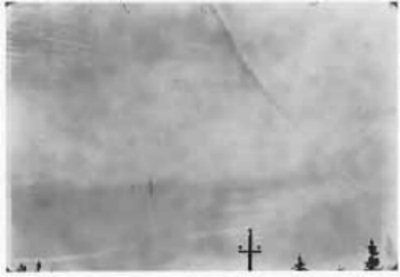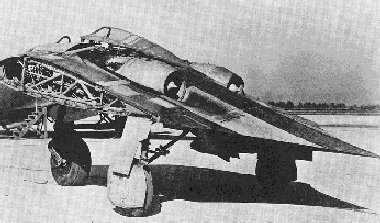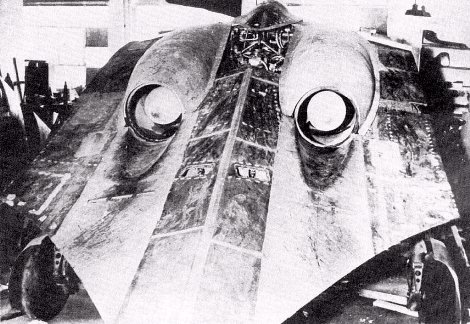TOP SECRET
LOAN DOCUMENT
TOP SECRET
TOP SECRET
2-7341
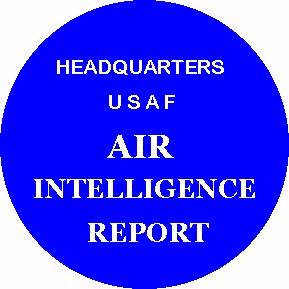
DATE 28 APR 1949
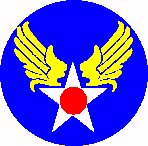
TOP SECRET AF cy 102
TOP SECRET
1. TO EXAMINE pattern of "Flying Saucers" (hereinafter referred to as flying objects) and to develop conclusions as to the possibility of existence.
2. A DETAILED discussion of information bearing on the problem as set forth above is attached as Appendix "A". The main points established therein are summarized below. 3. THE FREQUENCY of reported incidents, the similarity in many of the characteristics attributed to the observed objects and the quality of observers considered as a whole, support the contention that some type of flying object has been observed. Approximately 210 incidents have been reported. Among the observers reporting on such incidents are trained and experienced U.S. Weather Bureau personnel, USAF rated officers, experienced civilian pilots, technicians associated with various research projects and technicians employed by commercial airlines. 4. THE POSSIBILITY that reported observations of flying objects over the U.S. were influenced by previous sightings of unidentified phenomena in Europe, particularly over Scandinavia in 1946, and that the observers reporting such incidents may have been interested in obtaining personal publicity have been considered as possible explanations. However, these possibilities seem to be improbable when certain selected reports such as the one from U.S. Weather Bureau at Richmond are examined. During observations of weather balloons at the Richmond Bureau, one well trained observer has sighted strange metallic disks on three occasions and another observer has sighted a similar object on one occasion. The last observation of unidentified objects was in April, 1947. On all four occasions the weather balloon and the unidentified objects were in view through the theodolite. These observations at the Richmond Bureau occurred several months before publicity on the flying saucers appeared in a U.S. new spaper. 5. DESCRIPTIONS OF the flying objects fall into three configuration categories: (1) disk-shaped (2) rough cigar-shaped (3) balls of fire. Varying conditions of visibility and differences in angles at which the objects may have been viewed introduces a possibility that a single type object may have been observed rather than three different types. This possibility is further substantiated by the fact that in the areas where such objects have been observed the ratio of the three general configurations is approximately the same. 6. THEREFORE, IT appears that some object has been seen; however, the identification of that object cannot be readily accomplished on the basis of information reported on each incident. It is possible that the object, or objects, may have been domestically launched devices such as weather balloons, rockets, experimental flying wing aircraft, or celestial phenomena. It is necessary to obtain information on such domestic activity to confirm or deny this possibility. Depending upon the degree with which this may be accomplished, foreign devices must then be considered as a possibility. 7. THE PATTERN of sightings is definable. Sightings have been most intense throughout the states bordering the Atlantic and Pacific coast lines, and the central states of Ohio and Kentucky. A map showing location of sightings is attached as Appendix "B".
- 1 -
(1) The objects are domestic devices, and if so, their identification or origin can be established by a survey of all launchings of airborne objects. Domestic flying wing type aircraft observed in various aspects of flight might be responsible for some of the reported flying objects, particularly those described as disks and rough cigar shapes. (See Appendices "C" and "D".) Among those which have been operational in recent years are the XF5U-1 ("Flying Flapjack") developed by Chance-Vaught, the Northrup B-35, and the turbo-jet powered Northrup YB-49. The present existence of any privately developed flying-wing type aircraft has not been determined but one such aircraft, the Arup tailless monoplane, was operational at South Bend, Indiana, prior to 1935. (2) Objects are foreign, and if so, it would seem most logical to consider that they are from a Soviet source. The Soviets possess information on a number of German flying-wing type aircraft such as the Gotha P60A, Junkers EF 130 long-range, high-speed jet bomber and the Horten 229 twin-jet fighter, which particularly resembles some of the description of unidentified flying objects (See Appendix "D"). As early as 1924 Tscheranowsky developed a "Parabola" aircraft, an all wing design, which was the outcome of considerable Soviet experimentation with gliders of the same general form. Soviet aircraft based on such designs might have speeds approaching trans-sonic speeds attributed to some flying objects or greater over-all performance assuming the successful development of some unusual propulsion device such as atomic energy engine. 9. THAT THE Soviets have a current interest in flying-wing type aircraft is suggested by their utilization of Dr. Guenther Bock who, at the end of World War II, was in charge of the flying-wing program in Germany (See Appendix "A", paragraph 3, page 4). Achievements satisfactory to the U.S.S.R. are indirectly indicated by the personal recognition he is reported to be receiving in the U.S.S.R. Recently it has been reported that the U.S.S.R. is planning to build a fleet of 1,800 Horten flying-wing aircraft. Information of low evaluation has been received stating that a regiment of jet night fighters, Model Horten XIII, is at Kuzmikha, an air base two miles south-west of Irkutsk. Kuzmikha is identified as one of a number of airfields for the protection of an atomic energy plant at Irkutsk. The Horten XIII as developed by Germany was a glider. 10. ASSUMING THAT the objects might eventually be identified as foreign or foreign-sponsored devices, the possible reasons for their appearance over the U.S. requires consideration. Several possible explanations appear noteworthy, viz: a. To negate U.S. confidence in the atom bomb as the most advanced and decisive weapon in warfare. b. To perform photographic reconnaissance missions. c. To test U.S. air defenses. d. To conduct familiarization flights over U.S. territory.
11. SINCE the Air Force is responsible for control of the air in the defense of the U.S., it is imperative that all other agencies cooperate in confirming or denying the possibility that these objects have a domestic origin. Otherwise, if it is firmly indicated that there is no domestic explanation, the objects are a threat and warrant more active efforts of identification and interception. 12. IT MUST be accepted that some type of flying objects have been observed, although their identification and origin are not discernable. In the interest of national defense it would be unwise to overlook the possibility that some of these objects may be of foreign origin.
- 2 -
AND HYPOTHETICAL TACTICS EMPLOYED
2. SOME ASPECTS REGARDING FLYING OBJECT INCIDENTS. A cursory examination of evidence on reported incidents has been made and it is possible to cite certain generalities which it appears may be borne out when detailed analyses have been completed. Among the incidents reported there are many statements by reliable and experienced persons which tend to confirm that flying objects have been seen. The description of such objects seems to fall roughly into three categories: (1) Silver disks or balls, approximating a Horten wing type aircraft; (2) Balls of fire of various colors and intensities; (3) Cigar or pencil-shaped objects similar in appearance to V-2 type rockets in horizontal flight. The numbers of configurations might be further reduced with the following considerations in mind: Silver disks or balls have, for the greater part, been observed in daylight and a number under clear weather conditions with visibility unlimited. In most instances, balls of fire have been observed at night. Cigar, or pencil-shaped objects have been sighted in fewer numbers but with about equal distribution in daylight and at night. A few accounts tell of the disks having a rough cigar-shape when viewed while maneuvering. Some of the disks are d escribed as having luminosity in daylight. It therefore is possible that a single type of object may be involved in all sightings, and differences in description may result from viewing the objects at various angles and under differing conditions of visibility. The above tends to indicate that some type object has been seen and the possibility exists that the object or objects seen are conventional domestic devices, such as weather balloons, test rockets, or jet-equipped aircraft with pancake or flying wing configurations. The possibility exists that the reporting of flying objects may have been influenced by earlier reports on similar incidents in Scandinavia and Central Europe. The publication in newspaper of details on such incidents, both foreign and domestic, may have induced some of the description provided in reported domestic incidents. However, one of the earliest reported sightings in the U.S. was the one observed by U.S. Weather Bureau personnel in April 1947, at Richmond, Virginia, and on the basis of this one report it appears that the disks are not balloons. It would seem that this sighting was not influenced by the reports of foreign incidents, the newspaper accounts of domestic incidents, nor by misidentification of a conventional object.
3 -
Although reported domestic incidents are widely scattered throughout the U.S., frequency of sighting and number of observers per sighting assumes a definable pattern. There is a large concentration of sightings along the Eastern Seaboard; another large concentration throughout the Western Coast states, and a few sightings in the Middle West. Distribution of incidents by configuration of object and description of maneuverability is approximately equal in each of these areas and this is believed to further substantiate the possibility that one type of object might have been observed in different aspects of flight. If sightings are induced by rumor, it seems unusual that more incidents have not been reported from the areas with high concentration of population. Reports from such areas would also have greater facility in channeling either to newspaper or official reporting agencies. For the most part, sightings have been made in fairly open country where there are few restrictions to visibility, which may indicate that obstructed vision has reduced sightings in built-up areas. It therefore seems that some type of flying object has been observed; the identification of its origin requires the competion (sic) of other analyses. 3. POSSIBLE ORIGIN OF UNUSUAL FLYING OBJECTS. Provided, upon the completion of analyses, it is indicated that some or all of the reported flying objects over the U.S. are of foreign origin, the objects could from a logical viewpoint, be considered Soviet. It is evident from the performance characteristics attributed to the unidentified objects at this time that if they are foreign, they involve efficiencies of performance which have not been realized in any operational airborne device in this country. It would, therefore, be a mistake to analyze the technical aspects of the situation within the limits of our own knowledge of practical developments. It is more desirable to consider then the outer limits of possible Soviet developments and objectives in attempting to formulate some idea of the tactics which might be involved. First of all, the scientific objectives of the U.S.S.R. have been stated many times and indicated in many forms. The most clearcut statement of this objective is probably contained in the preamble to the Fourth Five-year Plan (1946-50) which states that the objective of Soviet science is to overtake and surpass the scientific and technical developments of the capitalist nations. It apparently would be an impossible task for the Soviet Union to accomplish such an objective by proceeding step-by-step along the same lines of development already achieved in the capitalist nations. This would mean that it would be necessary to rapidly proceed through each phase of aeronautical development that has already been accomplished in this country, and this probably would never have any prospects of accelerating Soviet development beyond any point reached by the U.S. The obvious answer to accomplish their objective of not only overtaking, but surpassing the capitalist countries would be a scient ific shortcut. This possibility is not so remote when examined on the basis of our knowledge of the current situation in the U.S.S.R. Provided Soviet emphasis was given to the most promising and advanced ideas acquired from Germany in 1945 and the work aided by German scientists, the possibility of catching up and possibly surpassing other nations in technical developments becomes more realistic. It becomes even more realistic if the Soviets have shown a tendency to concentrate on certain developments which have still not received a maximum of priority in our own programs. It is known that the U.S.S.R. has since 1945 enlisted the service of Dr. Guenther Bock, a German who headed all development of low aspect ratio (flying wing) type aircraft in Germany. Dr. Bock is believed to be the top German scientist in charge at TSAGI and TSIAM which are "Air Materiel Command" type organizations in the U.S.S.R. Further, it is believed that Dr. Bock has made available all German plans for flying wing type aircraft to the Soviets. Among the designs considered by the Germans and possibly exploited by the U.S.S.R, are jet-propelled, flying wing type aircraft whose configuration would be similar to descriptions of certain objects reported flying over the U.S. The estimated speeds of such aircraft are within range of the lower limits of speed attributed to flying objects over the U.S. It Is not impossible that emphasis on surpassing foreign developments has led to unusual progress in fuels and propulsion by the U.S.S.R. In connection with possible advancemen ts in the field of fuels and propulsion, it should be observed that
- 4 -
the Russian oil situation (regardless of estimated oil reserves) is quite different from that in the U.S. For example, U.S. oil industry is prepared to turn out tremendous quantities of highly fractionated petroleum products, while the U.S.S.R. cannot reasonably approach such capabilities. This consideration dictates different solutions on fuels for propulsion in the two countries and in turn, dictates the direction taken in development of jet motors or the use of other propulsive devices. We must therefore, arrive at the conclusion that any Soviet device which may have made its appearance over the U.S. as described, would possess unusual performance characteristics which, in all probability, would include unusual range. The possibility that they could have been launched at fairly close range should not be discarded. 4. POSSIBLE REASONS OR TACTICS FOR THE USE OF SOVIET UNCONVENTIONAL AIRCRAFT OVER THE U.S. Predicated on all the foregoing assumptions, Soviet unconventional aircraft may have been flown over the U.S. for one, all, or a combination of the following reasons: a. TO NEGATE U.S. CONFIDENCE IN ATOM BOMB AS THE MOST ADVANCED AND DECISIVE WEAPON. If the objects have been used in a propaganda sense, it would be reasonable to assume that the Soviets would choose first to frighten pro-American nations in Europe with the appearance of a radically new weapon to counteract the ability of the U.S. to obtain full propaganda effectiveness with the atom bomb. It will be remembered that strange objects first appeared over the Scandinavian countries in 1946. The objects observed there had unusual range and unusual performance characteristics. As this demonstration over the Scandinavian Countries occurred the U.S. was making a vigorous campaign for the economic and political alignment of these nations with other pro-American Western European nations. When these incidents subsided, strange flying objects began to be observed at an increasing rate over the U.S. The conclusion on this point is that flying objects may have been used to f righten both European nations and the U.S. by the appearance of a new device, and that failure to identify such a Soviet object would give them invaluable indication that U.S. development is far behind that of the Soviets. Except for this indication, it is believed that the use of the objects to promote fear has been worthless in that the U.S. public has tended to characterize these incidents entirely as hallucinations by "crack pots", misidentification of conventional objects, or that they represent a secret American project which should not be publicized. Any fear that might result from Soviet use will come only by a discovery that the objects have been Soviet aircraft and that they involve radical developments which are in advance of our own accomplishments. b. FOR PHOTOGRAPHIC RECONNAISSANCE. It is possible that the Soviets have employed the flying objects for the collection of photographic intelligence or the mapping of certain areas in the U.S. The evasive action employed by all objects sighted indicates not so much an attempt to avoid being sighted, as an attempt to prevent disclosure of the exact type of flying craft and its mission. The sightings of objects over the U.S. has been most intense in Eastern and Western Coastal States. In addition, sightings of flying objects have been made near Oak Ridge, Tenn., Las Cruces, N.M., and in the general area of the Hanford Works in Oregon. Generally, sightings have not been made over what we consider strategic industrial areas. The reason for this might be either that the flying objects have been observed only enroute to or from missions over these more concentrated strategic areas, or that the Soviets obtained sufficient information during their World War II liaison w ith U.S. industry to satisfy their intelligence requirements and have a more active requirement for information on industries and areas which were not available to them during World War II contacts. This is of interest in connection with the sightings near Oak Ridge, Las Cruces, and in the general area of the Hanford Works since these establishments were not, and are not, accessible to Soviet collectors of photographic intelligence. c. TEST OF U. S. DEFENSES. It is possible that the use of Soviet flying objects over the U.S. is intended only to determine the ability of the U.S. defenses to spot foreign aircraft. This would be of extreme importance to the U.S.S.R. in the event that a one-way all-out attack of Soviet strategic bombers is planned. Ability to operate over the U.S. uninhibited at a time when the U.S. is supposedly re-arming and putting great stress on defenses would provide valuable information on which to base estimates for probability of success in bombing strategic objectives in the U. S.
- 5 -
5. CONCLUSION. The conclusion that some type of flying object has been observed over the U.S. seems to be substantiated. It is not known at this time whether these observations are misidentifications of domestically launched devices, natural phenomena, or foreign unconventional aircraft. It is, therefore, impossible to make any reliable explanation for their appearance over the U.S. or the tactics which they may employ if the objects observed include any foreign developments in aeronautical fields. It is likewise impossible at this time to contain discussions of possible performance characteristics or tactics within limits of practical reason, if for no other reason than the fact that proof of the existence of a foreign development of this type would necessarily introduce considerations of new principals and means not yet considered practical possibilities in our own research and development.
Appendix "B" map showed locations of UFO sightings in U.S. comprising reports of:
7 -
1. A NUMBER of reports on unidentified flying objects come from observers who, because of their technical background and experience do not appear to be influenced by unfounded sensationalism nor inclined to report explainable phenomena as new types of airborne devices. Some of the details of their reports are presented in this appendix, along with those from possibly less reliable sources who have reported evidence which is of such a nature that it cannot be entirely ignored. 2. DESCRIPTIONS OF significant incidents, arranged chronologically, follow: a. During April 1947, two employees of the Weather Bureau Station at Richmond, Virginia reported seeing a strange metallic disk on three occasions through the theodolite while making PIBAL observations. One observation was at 15,000 feet when a disk was followed for 15 seconds. The disk appeared metallic, shaped something like an ellipse with a flat bottom and a round top. It appeared below the balloon and was much larger in size. The disk appeared to be moving rather rapidly, although it was impossible to estimate its speed. The other observations were made at 27,000 feet in like manner. b. The following month, Byron B. Savage, a field engineer for Radio Corporation of America, reported a disk flying near his home in Oklahoma City, Oklahoma. The object was thought to be at an altitude between 10,000 feet and 18,000 feet, and was moving toward the north at a high rate of speed, leaving no trailing effects. c. While flying at 10,000 feet on a course of 300 degrees, 30 miles northwest of Lake Meade, Nevada, an Air Force lieutenant reported seeing five or six white circular objects in close formation and traveling at an estimated speed of 285 miles per hour. This sighting occurred on 28 June 1947. d. The following day a party of three, two of them scientists, were motoring along Highway 17 toward the White Sand, New Mexico, V-2 firing grounds and reported seeing a large disk or sphere moving horizontally at a high speed and an estimated altitude of 10,000 feet. It was of uniform shape and had no protruding surfaces such as wings. The object was in sight for about 60 seconds before it disappeared to the northeast. The three observers agreed on the details of the sighting except that one thought he had seen vapor trails. e. On 7 July 1947, five Portland, Oregon police officers reported varying numbers of disks flying over different parts of the city. All observations were made within a minute or two of 1305 hours. f. On the same day, William Rhoads of Phoenix, Arizona allegedly saw a disk circling his locality during sunset and took two photographs. The resulting pictures (page 9) show a disk-like object with a round front and a square tail in plan form. These photographs have been examined by experts who state they are true photographic images and do not appear to be imperfection in the emulsion or imperfections in the lens. (See Figs. 1, 2, 3 and 4.)
- 9 -
g. On 10 July 1947, Mr. Woodruff, a Pan-American Airways mechanic reported a circular object flying at high velocity, paralleling the earth's surface and leaving a trail which appeared as a "burning up" of the cloud formation. The sighting occurred near Harmon Field, Newfoundland. Two other persons also saw the trail which remained in the sky for about an hour and was photographed by another PAA employee. The resulting photographs support Mr. Woodruff's observation as far as the sky cleavage is concerned. (See Figs, 5 and 6.)
- 10 -
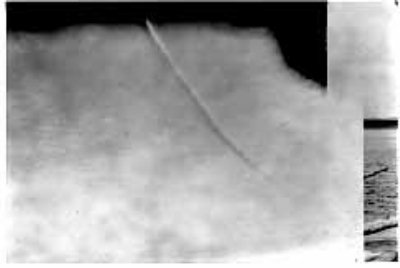
h. On 29 July 1947, Kenneth Arnold, while flying near Tacoma, Washington, reported a formation of flying objects. The sketch of their shape corresponds closely to that shown in the photographs made by Mr. Rhoads. On the same day, two U.S. Air Force pilots at Hamilton Field reported two flying disks trailing a P-80, following it toward Oakland, California. i. On 4 August 1947, the pilot and co-pilot of a DC-3, flying for one Al Jones, near Bethel, Alaska, reported a flying disk larger than their aircraft. This disk crossed their path at about 1,000 feet and they turned to give chase. The DC-3 was flying at 170 mph, but the disk flew out of sight in four minutes. j. On 12 November 1947, two flying disks trailing jet-like streams of fire were reportedly sighted from the bridge of the tanker Ticonderoga, according to the second officer. The Ticonderoga was 20 miles off the Oregon shore. This officer said the disks were in sight 45 seconds, moving at a speed estimated at 700-900mph, curving in a long, low arc.
- 11 -
k. On 7 January 1948, a National Guard pilot was killed while attempting to chase an unidentified object up to 30,000 feet. While it is presumed that this pilot suffered anoxia, resulting in his crash, his last message to the tower was, "It appears to be metallic object....of tremendous size...directly ahead and slightly above....I am trying to close for a better look." l. On 5 April 1948, three trained balloon observers from the Geophysics Laboratory Section, Watson Laboratories, N.J. reported seeing a round, indistinct object in the vicinity of Hollman Air Force Base, New Mexico. It was very high and fast, and appeared to execute violent maneuvers at high speed. The object was under observation for approximately 30 seconds and disappeared suddenly. m. A yellow or light colored sphere, 25 to 40 feet in diameter was reported by Lt. Comdr. Marcus L. Lowe, USN, just south of Anacostia Naval Air Station, D.C., while he was flying on 30 April 1948. It was moving at a speed of approximately 100 miles per hour at an altitude of about 4,500 feet. Although winds aloft were from the north-northwest, its course was to the north. n. On 1 July 1948, twelve disks were reported over the Rapid City Air Base by Major Hammer. These disks were oval-shaped, about 100 feet long, flying at a speed estimated to be in excess of 500 mph. Descending from 10,000 feet, these disks made a 30-degree to 40-degree climbing turn accelerating very rapidly until out of sight. o. On 17 July 1948, a report from Kirtland Air Force Base describes a sighting in the vicinity of San Acacia, New Mexico, of seven unidentified objects flying in a "J" formation at an estimated height of 20,000 feet above the terrain. The formation varied from "J" to "L" to circle after passing the zenith. Flashes from the objects were observed after passing 30 degrees beyond the zenith but there was no smoke or vapor trail. If the reported altitude is correct the speed was estimated at 1,500 miles per hour, according to the report. p. Other sightings of lights and trails, rather than disks, have been reported, viz:
q. During the early morning of 25 July 1948, two Eastern Airlines pilots reported having seen a huge flying craft similar to a V-2 pass their aircraft in flight. (See Figs. 7 and 8.) The attached drawings made by these two observers very closely resemble a flying object reported to have been seen on 20 July 1948, by A. D. Otter, chief investigator of Court of Damage Inquiry, and his daughter at Arnham, Netherlands. This object appeared to be a wingless aircraft having two decks. The craft, sighted four times through scattered clouds and unlimited visibility, was traveling at high speed at a high altitude. A sound similar to that made by a V-2 was reported. r. An object, similar in shape to the one in the preceding incident was reported by an experienced American newspaper reporter about 25 kilometers northeast of Moscow on 3 August 1948. A Russian acquaintance identified it as a rigid airship but the reporter disagrees because it flew at a high, but not excessive speed. s. On 1 October 1948 at approximately 2030 hours the pilot of a F-51 aircraft, 2nd Lt. George F. Gorman (North Dakota Air National Guard), flying near Fargo, North Dakota, sighted an intermittent white light about 3,000 feet below his 4,500 feet cruising altitude. The pilot pursued the light which appeared to then take evasive tactics. The object or light out-turned, out-speeded, and out-climbed the F-51 in every instance during the attempt to intercept. The pilot lost contact 27
- 12 -
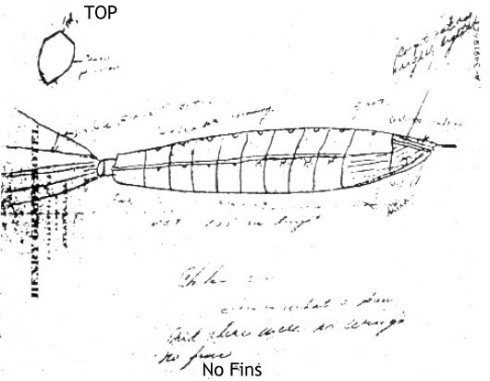
- 13 -
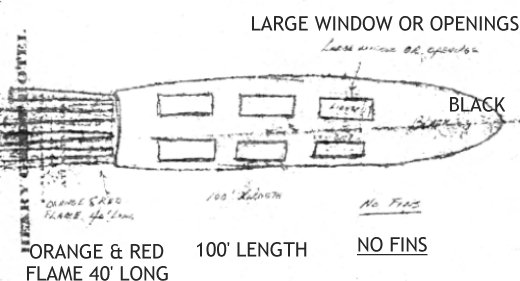
- 14 -
minutes after the initial sighting. The same light was observed by three other witnesses from the ground: Mr. L. D. Jensen, Air Traffic Controller, Mr. Manuel E. Johnson, Assistant Traffic Controller, and Dr. L. N. Cannon, Occulist. A comparison of all testimony revealed that one object was sighted and that it consisted only of a small round ball of clear white light with no apparent shape attached. It was about 6 to 8 inches in diameter. At times it traveled faster than the F-51 and performed maneuvers in an evasive manner. When first sighted the ball of light was traveling at an estimated 250 miles per hour. Under this condition, the light was not continuous but blinked off and on. At high performance the white light was continuous. Subsequent investigation eliminated the possibility that this incident may have been another aircraft or a meteorological balloon. t. On 18 November 1948 at approximately 2145 hours, three reserve pilots, 2nd Lt. Kenwood W. Jackson, 2nd Lt. Glen L. Stalker, and 2nd Lt. Henry G. Combs, flying near Andrews Field, Maryland, encountered an unidentified flying object. When first sighted, it appeared to be lighted and flying at about 1,700 feet. Three or four passes were made in an attempt to identify it. The pilot of the aircraft stated that while diving his aircraft at approximately 240 miles per hour, the object would climb vertically and then would drop below the aircraft from behind and continue to circle. On the last pass, the landing light was switched on and momentarily a dull gray glow from the object was observed. Lt. Combs stated he maintained contact for about ten minutes with the object flying between the lights of Washington, D.C. and his aircraft. All that could be observed was an oblong ball with one light, no wings and no exhaust flame. It finally made a very tight turn and headed toward the east coast at an estimated 500 to 600 miles per hour. At the same time Staff Sergeant John J. Kushner observed from the ground an unusual object in the air over Andrews Field. He stated that it was not very high and that it did not look like an aircraft. 3. REPORTS OF radar intercepts point to unusual air activity which may be related to flying objects. 4. Investigations conducted by Headquarters, Air Materiel Command, have definitely established the identification of 18 of approximately 210 so-called flying saucers which have been reported. Approximately nine per cent of the total number of incidents are, therefore, eliminated from further specific consideration. Among those incidents positively explained, three were hoaxes, two were from unreliable witnesses. In the remaining 13 eliminated incidents, objects were actually seen but investigation has shown that they were celestial bodies or phenomena, meteorological and carnival balloons, and airborne cosmic ray experimental equipment. The following examples are presented for comparison of the information reported by witnesses and true identification of the object involved: a. On 22 July 1948, Captain Henry Glover (Ordnance Reserve) and his wife observed at Van Nuys, California, an object which they were unable to positively identify. Object at first appeared to be round and looked like a weather balloon at about 2,000 feet but there was no characteristic bobbing. The wind was blowing on the ground but the object was quite steady. During the time it was under observation, about an hour, it traveled through a vertical arc of about twenty-five (25) degrees or more. The observer concluded that it was not a celestial body. It has a bluish luminescence and as the sun set, the object's color gradually changed to orange at dusk and ceased to be illuminated almost instantaneously. The outline was clear and the air was clear with visibility unlimited. The object traveled from the east to the west. This object was determined by investigation to have been a balloon carrying cosmic ray equipment. - 15 -
b. On 19 August 1948, at approximately 1050 hours an unidentified object was visible from the ground at Godman Air Force Base, Kentucky. This object was estimated to be at about 30,000 to 40,000 feet altitude, spherical in shape, bright silver color and gave a bright reflection from the sun. An F-51 was dispatched from Standiford Air Force Base, Kentucky, to observe the object. During observation from the ground, there was no change in the elevation of the object and it seemed to be moving southwest from Godman Air Force Base. The F-51 which was flying over Godman AFB at an altitude of 30,000 to 35,000 feet reported that it was unable to locate the object although it was still visible from the ground to the naked eye. Azimuth and elevation readings were taken by theodolite every minute and the path of the object was charted. The object was determined to be the planet Venus by Mr. Moore, the head astronomer at the University of Louisville, Louisville, Kentucky. It is believed that earlier Incidents at Godman Field (reference paragraph 2k, page 12, Appendix "C") may also have been observations of the planet Venus. 5. AMONG THOSE incidents still not positively explained, reported observations differ to some extent, but three general categories of sightings emerge -- the flying disk, the ball of fire and the large jet rocket. Interesting observations that were noted are: a. Most of the objects are a thin disk, round on top and flat on the bottom. The front half of the disk is often circular, sweeping back to a square tail across the full width. b. A high rate of climb as well as the apparent ability to remain motionless or hover for a considerable length of time is indicated. c. Reported sizes have varied from that of a 25-cent piece to 250 feet in diameter, and from the size of a pursuit plane to the bulk of six B-29 airplanes. d. Speeds have been estimated throughout the entire range from very slow or hovering to supersonic. e. Sounds and visual trails are not normally associated with the sightings.
- 16 -
1. AERONAUTICAL ENGINEERS in several countries have been engaged for some time in the design, construction and flight of flying wing type aircraft. The study of flying objects requires, at least, a brief examination of proposed and existing unconventional aircraft whose configurations, when seen by the the uninitiated, could lead to reports of strange flying devices. A description of some of the more significant types by country follows. 2. GERMANY. At the end of World War II, German aircraft designers had numerous projects under way concerning tailless aircraft which conceivably could be mistaken for "Flying Saucers" or disc-like objects. It is not clear just what the Soviets are doing in the way of developing these projects but it is considered that German studies on tailless, delta-wing, and related configurations are available to the U.S.S.R. a. ARADO NIGHT AND BAD WEATHER FIGHTER, PROJECT I. This is a tailless, low-wing monoplane with swept-back wings of large root chord and having a long, narrow fuselage.
b. ARADO E 581-4. A high-wing tailless single-seater with a single jet unit mounted in the fuselage. Fin and rudder units are mounted on the wing midway between the fuselage and the wing tip at the trailing edge.
c. GOTHA P 60-A. This was the first of the P 60 series of jet fighters. It is a flying wing type and, since the pilot and observer lie prone, there is no projecting canopy, thus permitting a particularly clean design. The jet units are mounted at the rear of the center section, one above and one below.
d. HEINKEL P-1080. This is a single-seat fighter with a sharply swept-back wing, resembling a flying wing type, but having a single fin and rudder with no tail plane.
- 17 -
e. JUNKERS EF-130. Of the flying wing type, this project was established as a long-range, high-speed jet bomber.
f. ME-329. This is a tailless mid-wing monoplane driven by two pusher propellers with the engine centrally located in the wings on each side of the stubby rounded fuselage.
g. HORTEN WING. The closest resemblance to the estimated configuration of "Flying Disks" is represented by the Horten Wing aircraft. Work on the Horten 229, a twin jet fighter, had progressed to the final stages at the end of World War II. Its prototype, a Horten glider, successfully soared to an altitude of 14,200 feet as early as 1938, proving the soundness of this design. (Figs. 1, 2, and 3)
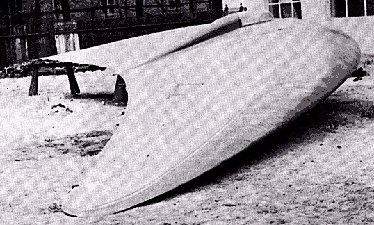
- 18 -
CONFIDENTIAL
- 19 -
CONFIDENTIAL
- 20 -
CONFIDENTIAL 3. GREAT BRITAIN a. THE ARMSTRONG WHITWORTH. The AW 52 G, a glider, and the AW 52, a twin-jet airplane, are British designs of tailless aircraft. The vertical stabilizers are located at the tips of the swept-back wing. (Figs. 4 and 5.) Data on the AW 52 appear below:
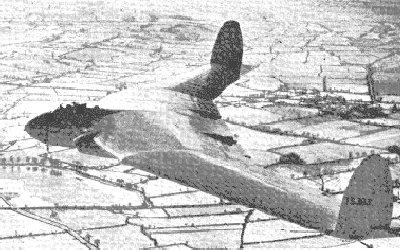
- 21 -
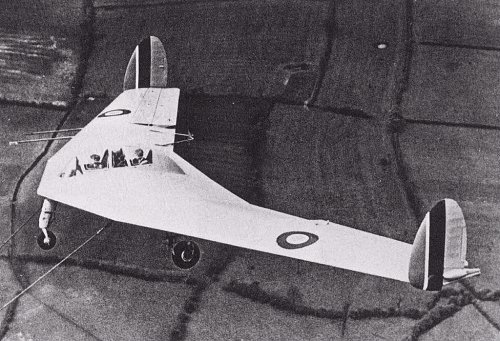
- 22 -
CONFIDENTIAL 4. UNITED STATES. a. NORTHROP B-35. This is a flying wing type aircraft, powered by four reciprocating engines and has a wing span of 172 feet and a length of only 53 feet. (See Fig. 6)
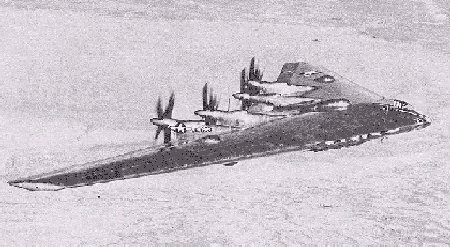
- 23 -
b. NORTHROP YB-49. Powered by eight turbo-jet engines, this airplane is the jet-propelled version of the Northrop Flying Wing. (B-35) (See Fig. 7)
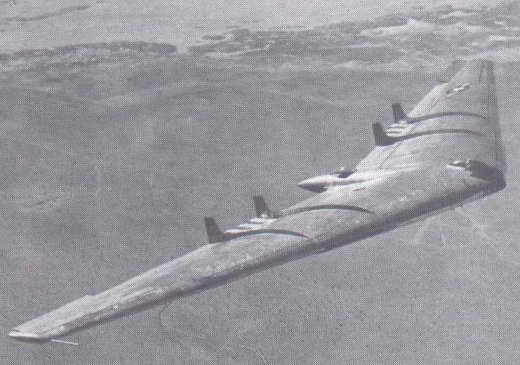
- 24 -
c. CHANCE-VOUGHT XF5U-1. Developed by Chance-Vought Aircraft, this radical design promises the reality of high and low speed performance. Powered by two R-2000-2 engines, the airplane will have a speed range from 40 to 425 miles per hour. (See Fig. 8)
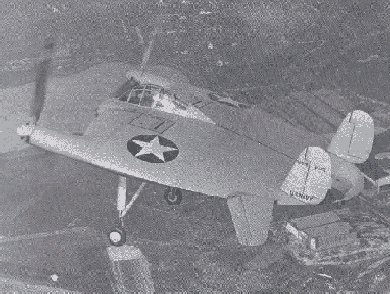
- 25 -
d. ARUP TAILLESS MONOPLANE. Jane's "All The World's Aircraft" (1935 edition) describes this airplane as "a two-seat machine with a 70 h.p. LeBlond engine....This has a high aspect ratio wing with straight leading-edge and built in nacelle...." In plan form, the wing is almost semi-circular. An Air Force film "Aeronautical Oddities", shows this airplane in flight at South Bend, Indiana and in some attitudes appears identical to the photograph included in Appendix "C"; as Figure 4. Although it is believed that the ARUP Manufacturing Co. is no longer in existence, it is possible that later models of this or similar U.S. civil aircraft may have been observed.
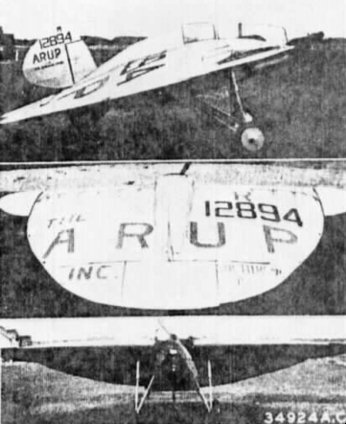
5. ALTHOUGH APPENDIX "D" is not intended to explain conclusively the phenomenon of "Flying Saucers" the possibility of unconventional type aircraft being the cause of flying disk reports must not be overlooked.
- 26 -
|
